What a time we live in. If you are a fan of sports, or more specifically motorsports, there is so much access in 2023 and going forward. We have an almost endless list of podcasts, websites, and social media access, giving us up-to-the-minute updates on our favorite athletes and teams. The latest news is at the tip of your fingers, and you can discuss and argue about it with like-minded fans anywhere in the world at any time of the day. The coverage is more abundant for Supercross and motocross fans worldwide than ever. One of the platforms that has evolved and become more accessible is the television coverage of each race.
Many of us remember waiting, sometimes weeks, to watch the latest round of Supercross or Pro Motocross. I remember setting the timer on my VCR for one a.m. to record a race on ESPN's SpeedWorld and hoping the TV Guide had the correct time slot. I can't tell you how many times I woke up in the morning and rewound the tape only to find tennis or some other program was on instead of the race. There was no way to go back and see the race then. You then waited for the next issue of whichever magazine you subscribed to so you could read about the results a month later.
Watching a Supercross race was a privilege. When you did catch one on TV, it was amazing. We took in every moment of the one-hour program. Seeing an interview with Damon Bradshaw, Jeremy McGrath, or Jeff Emig was so cool. It was the only way to see these guys' personalities and hear their thoughts. There was no YouTube, podcasts, Vlogs, Instagram, or Twitter for us to hear from our heroes. As for race coverage, more often than not, we got highlights of the 250 (now 450) heats and semis, highlights of the 125 (now 250) main event, and then the 250 main event with commercial interruptions. Yes, that's right, there were commercials during the main. They'd come back from the commercial break, and you'd missed some of the race, and it wasn't even live. Can you imagine the Twitter backlash today?
As I said, the TV coverage has evolved and improved drastically. Having all 31 races of the Supercross, Pro Motocross Championship, and SuperMotocross World Championship on Peacock is almost unbelievable. Could it be better? Of course. Things can always be improved, and Feld and the TV crew continuously strive to do just that. You're probably saying, "Here we go. He's going to be biased and not going to be honest." To that, I believe the TV coverage is pretty damn good. It's hard to argue how much access we have and that every race is available live. Yes, some things could be better, and moments frustrate me, but I'm also thankful for what we have.
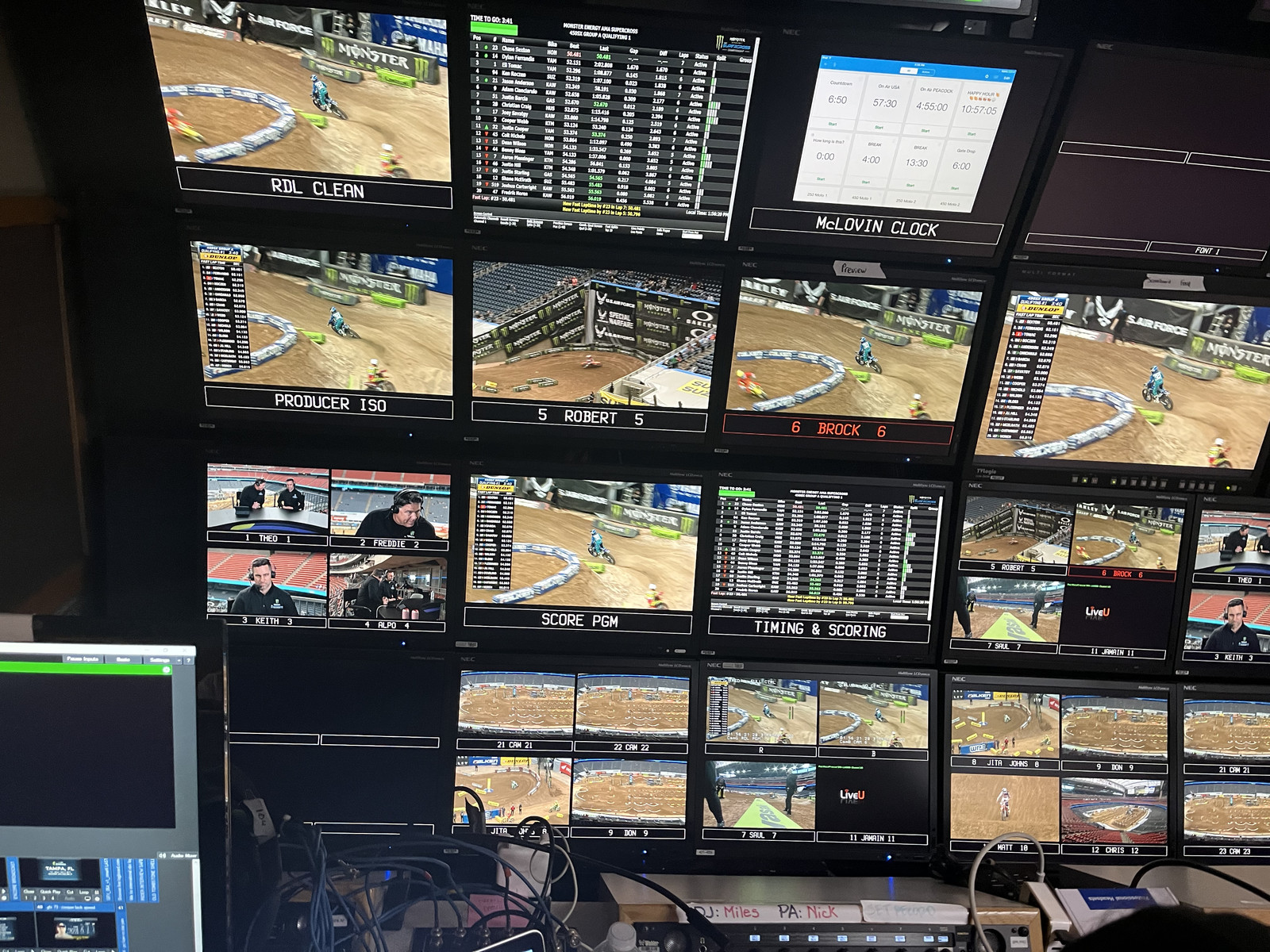
We've heard consumer complaints about the broadcast on social media and in the Vital MX Forum. For this reason, I spent a few hours with Doug Cabrera, Director of Broadcast and Media Content, and Chris' Bondo' Bond, SMX Lead Producer, at the Houston round of Supercross. Doug has close to 40 years of experience. He worked with Monster Jam and then Supercross for most of those years. Bondo has also been at this for 40-plus years, working with stick and ball sports, including the Atlanta Braves and Charlotte Hornets, AMA Road Racing, Arenacross, and Supercross. I wanted to understand how a broadcast went together, ask some questions, and share these common complaints.
They showed me around the TV trucks, and I watched Race Day Live as the crew produced the show. It's a very intense environment with multiple departments in three trucks communicating back and forth. Everything is scheduled to the minute. There is a minute-to-minute schedule of who's on, the topics expected to be discussed, breaks, advertiser reads, etc. There are many moving parts to a live sports broadcast; watching it in person could give you anxiety.
As far as the common complaints are concerned, we'll address a few here. Starting with Race Day Live, the biggest issue I've heard and watched myself is when one commentator says, 'So and so is on a heater,' but the camera stays on a rider 'rolling around.' This can be quite frustrating, so I asked Doug and Bondo about this issue.
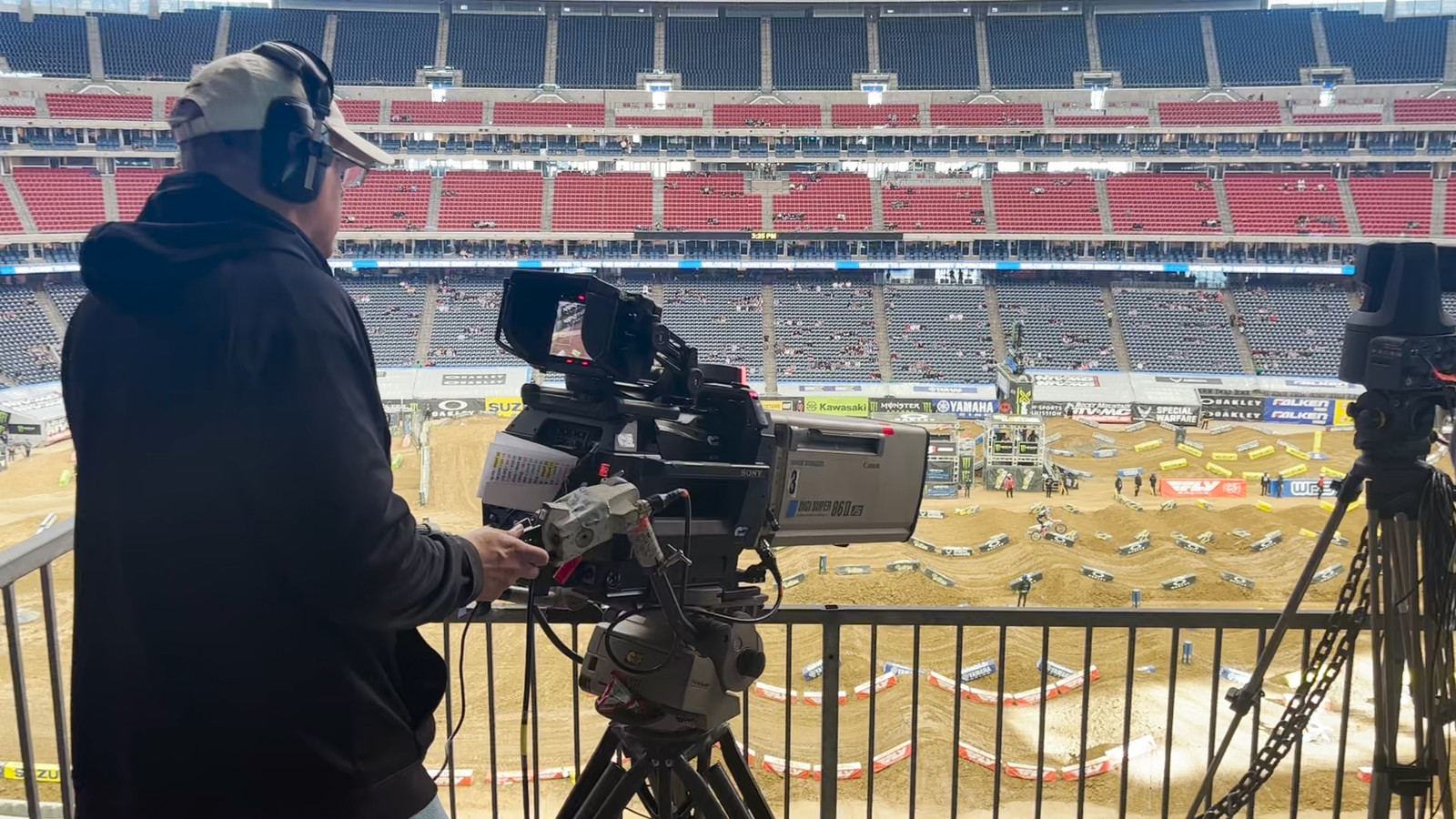
Doug Cabrera: "I don't disagree. Sometimes that happens. Jeff Harper, our producer, tries hard to find the guys on heaters, and I hear him constantly on the headset, "Find me someone on a heater." The camera people are scrambling, and they're looking, but you can't predict what these guys will do, especially when practicing or qualifying. It's a constant balance. I think if we get more cameras out there and this team becomes bigger, we can capture more of that stuff."
Only two cameras are being used during Race Day Live, with no spotters. The RDL crew is simply on a smaller budget. The entire broadcast has expanded and improved over the years and will continue to do so.
Another common complaint is during the night show when the Heat race winner crosses the finish line, the broadcast cuts away and goes to a commercial break. As fans, we want to see the battles behind first place finish out the race. The reason this happens at some events is time restraints.
Bondo: "It's just timing. Supercross is a three-hour show from start to finish. In those three hours, we have to get 14 commercial breaks in. You will notice that there are times when we go back, show the battle for ninth, and take it to the finish. If you look at it, it's because there was a 46-second lap time. When we rush to break, you'll see that the lap times are 58 to 59 seconds. Or even over a minute. That's basically another minute longer than it could be. It's just trying to stay on time because once you get behind, you have to start making concessions to catch up. If we could do everything we wanted, we would show everybody crossing the line and show the best battles, but it's mandatory to get the breaks in. If the races are longer, we go to break quicker."
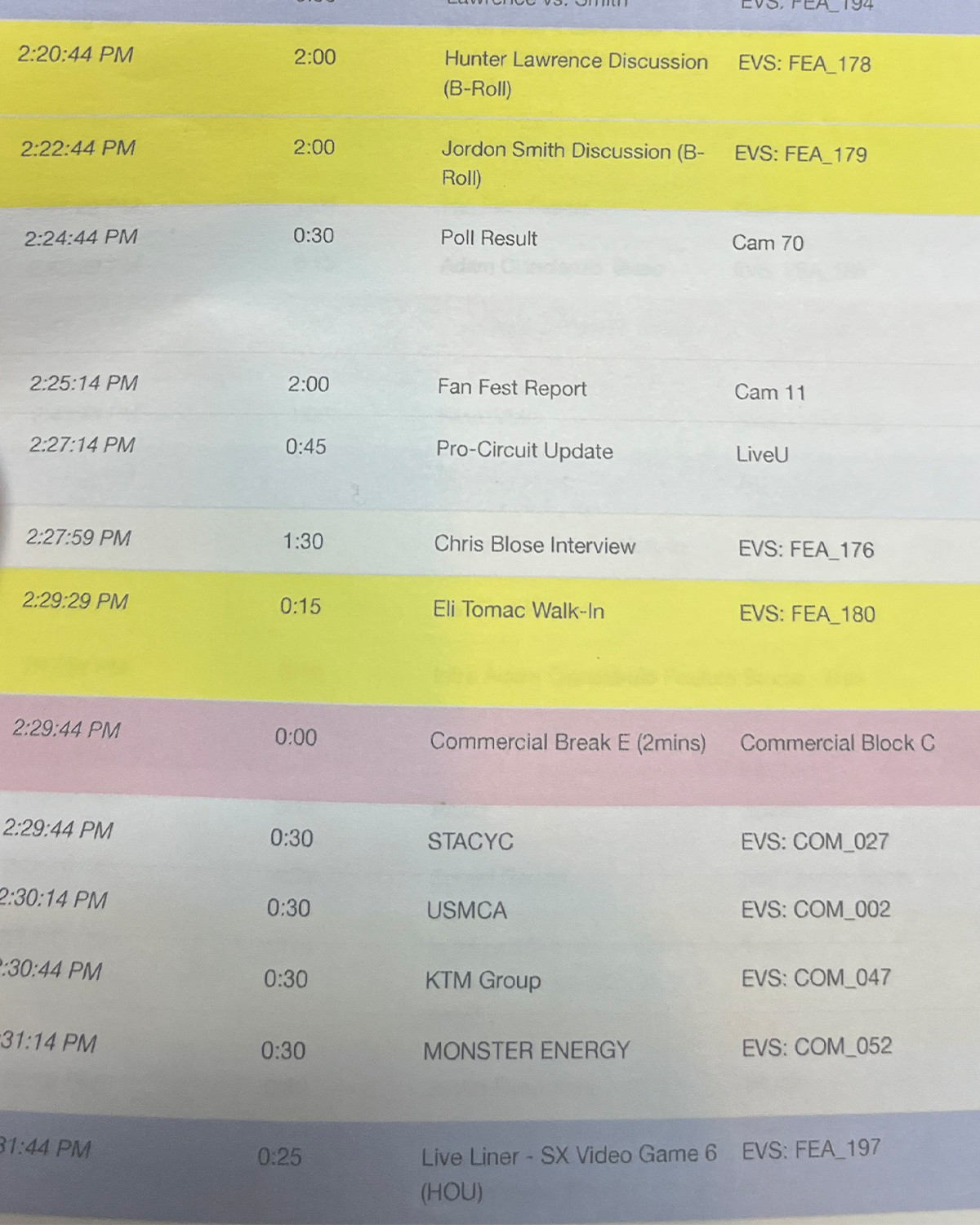
Many would say, "They should cut Science of Supercross or some other segment that isn't racing. We only care about the racing." Honestly, I would rather see the extra racing than the segments, but sponsors pay for the segments, and are necessary. They have to pay the bills, too. Feld also believes they are important to the sport's growth for connecting with newer fans and building a story.
Doug: "We do have many sponsors that are part of this industry that help and support the sport we all love. With that comes obligations. We don't want to do a disservice to our sponsors because they're very important to us."
Bondo: "The segments should be important to the fans because they are why we're not broadcast eight days later, and they can watch live as it happens."
The TV production team aims to get more people watching the race and interested in the riders as individuals. Racing is priority one, but giving insight into who the athletes are is equally important to the sport's growth in their eyes. Fans all have their favorite riders, but why are they their favorites? The idea is to show 'personal interest' segments with riders, allowing viewers to get some insight into their personalities. A soundbite on Eli Tomac being a father rolled in while Eli is leading a race could potentially interest a viewer to connect with him and now become a fan. I understand that the hardcore and die-hard moto fans generally already know this information and don't want it interrupting the race. They can't only concern themselves with the hardcore fans. The goal is to grow the audience and build a storyline.
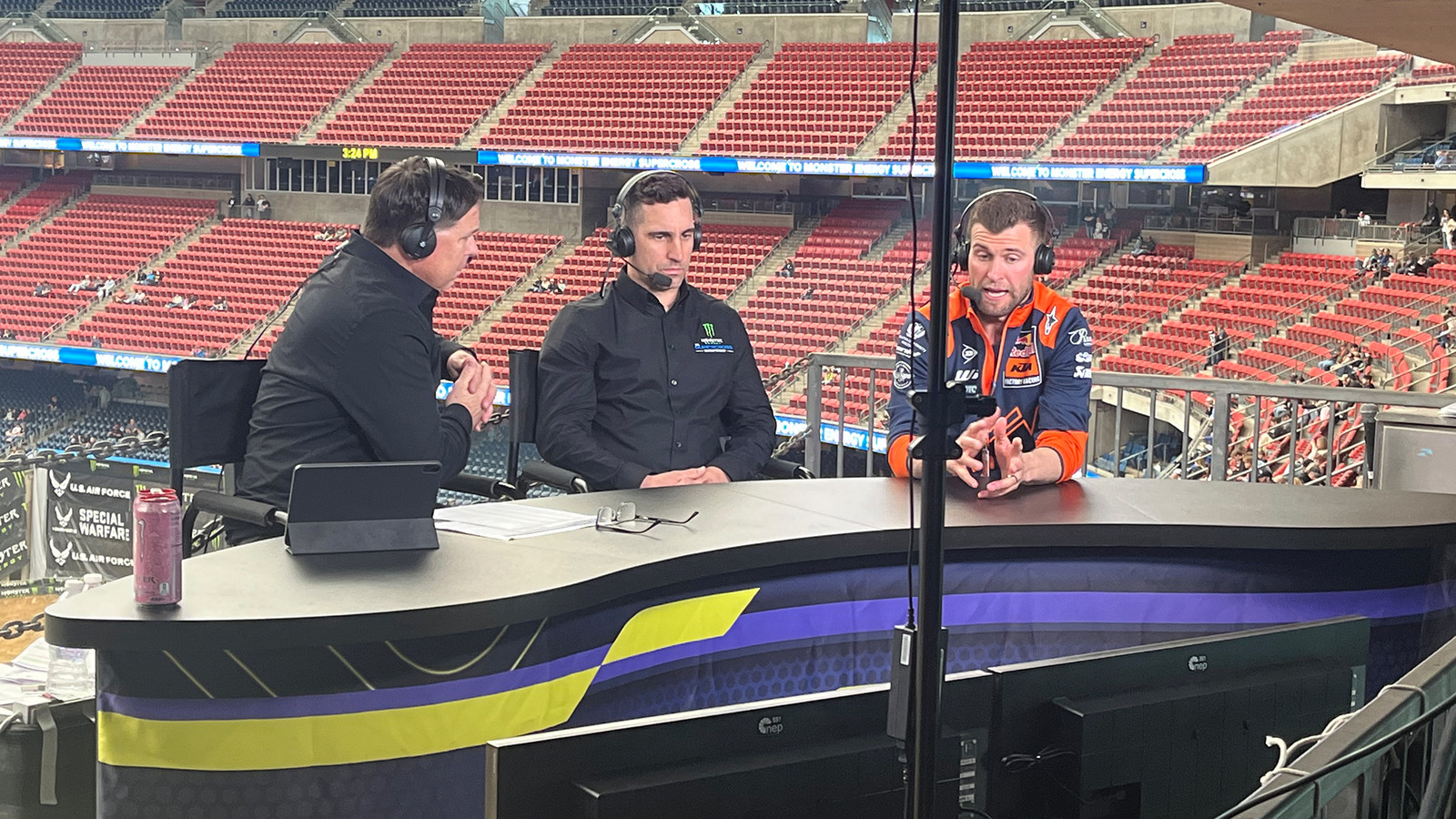
Bondo: "The idea in a perfect world is they hear that soundbite or some story that happens, and the next time they're flipping around, and they come past Supercross, they're watching again, and now their friends are watching."
In reality, it's impossible to make everyone happy. Nothing is ever perfect, but we are light-years ahead of what we had just a few years ago. I asked what they thought made for a good production of a race.
Doug: "Giving the folks an insight on what's happening with the top stories, but also touching on stories they may not have been aware of. If we're touching on a privateer or rider with a military family background and they've done X, Y, and Z. To educate them on how the sport really works, that it's a family sport, and that it's not a weekend warrior. These guys are legitimate athletes, no different than the NFL or MLB."
Storylines. That term continuously came up, and I wonder if that is a point of contention for viewers who complain about the broadcast. As stated, some core fans want to see racing and don't want the 'fluff,' but the storylines are important. They are important not only for the sport's growth but also for entertainment value and for instilling knowledge. The personal interest and technical segments have information that not everyone watching knows.
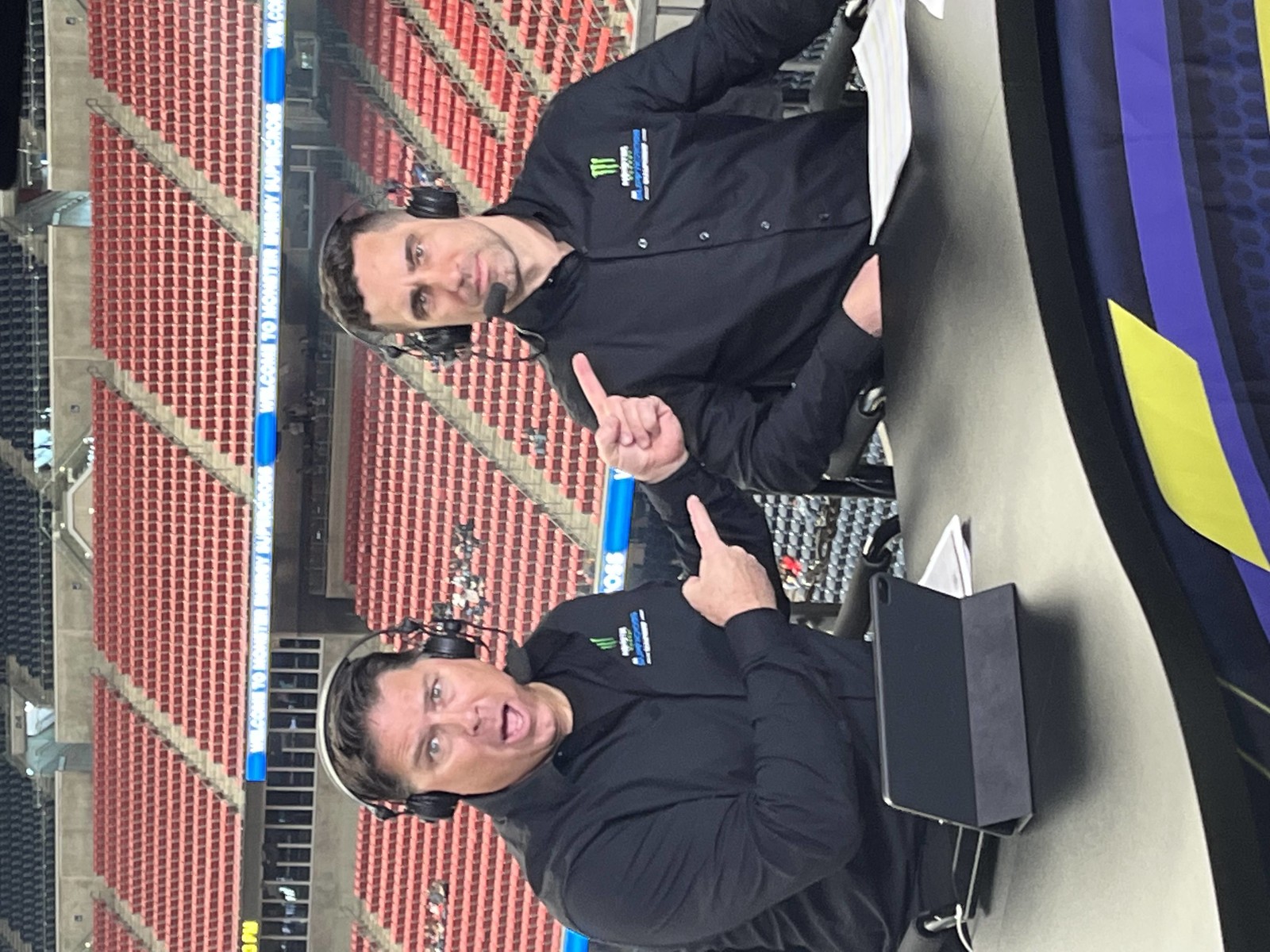
I appreciate it when the storylines focused on are centered around the riders and teams versus the event or event structure itself. With SMX being new this season, there were many talking points focusing on the new format, and I understand much of it was necessary. At certain times, I felt it overshadowed the more exciting stories of the race, racers, and championships.
The SuperMotocross World Championship was a huge storyline all season. It's new and exciting, and Bondo and Ken both mentioned wanting to make the SMX series one with Supercross and outdoors. By explaining the new series point structure for a better viewing experience, they believe it helps engage differently and how we're leading to something with the playoffs and the finals.
I've heard a third issue during a race, similar to the RDL issue. The cameras may focus on a rider 'just riding around' while battles are behind him. We can see riders moving up on the ticker, so why are we not seeing these battles?
Bondo: "We've been more aggressive in recent years with boxes, so we can always have something on the screen, even if it's not what the announcers are discussing. Sometimes, the guys in the booth are going into something, and they're talking about pictures on the screen, which is what we want them to do. Things happen on a Supercross track quickly, and you're trying to get them to wrap it up so we can go to the next battle. It's not voice-activated. It doesn't just happen with a thought. We have a spotter in the stadium for Supercross as well as outdoors. It's harder outdoors. We have one camera chasing battles and one camera always on the leader, so we don't miss some tragic thing, like the leader crashing when they're out front. We don't get there as quickly as the fans would sometimes like, but we're getting there as quickly as possible. The spotter can only see so many things at one time. Cooper Web and Jason Anderson may be battling for fourth, but their attention might have been on Eli Tomac passing into ninth because he crashed at the start. Sometimes, you have to make a decision and live with it."
I spoke to Ken Adelson, the Senior Director of Broadcasting, who was brought in last year as a consultant to add a fresh set of eyes to see if anything could be added or improved. Ken was instrumental in adding a second drone to the outdoor coverage and the graphics on the screen in Supercross and the Pro Motocross Championship. Ken was new to Supercross but previously worked with NBA Entertainment, the Oklahoma Thunder, and the NHRA. Since he was new to Supercross, I wanted to hear his initial thoughts.
Ken: "This is a sport of incredible athletes and great competition, and it was hidden in many ways even though it's been on TV and it's been around for 50 years. In the sporting landscape, it should be on everyone's radar because what these guys are doing is physically incredible, and the technology of the motorcycles. It has drama, it has excitement, and it has the elements that everyone looks for. I want to apply my experience to help take it as far as possible."
Coming from the NBA and NHRA, I asked him how he felt this sport compares from a production standpoint.
Ken: I find it much more challenging because it's not a rectangular court or a circle where you can see everything. You want to be showing the lead, but you also want to show a battle for seventh. We want to be able to tell the stories throughout, and because they're not happening in one place, that adds a dimension that these other sports don't have."
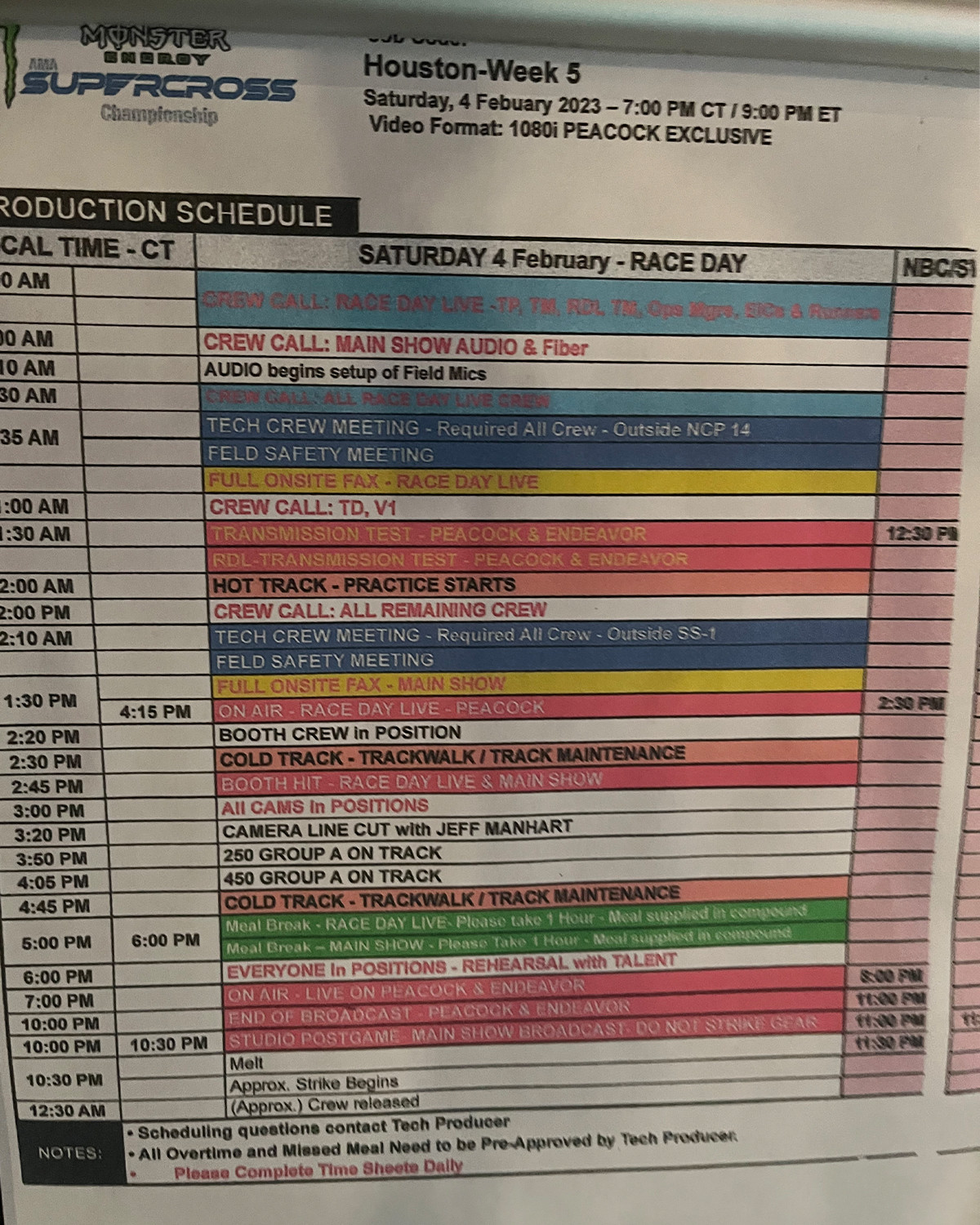
As the Pro Motocross Championship recently ended, I saw improvements in its coverage. The drone footage was much better and showed the viewers some fantastic shots. Also, adding James Stewart in the booth appears well-liked by the fans, and his ability to break down what a rider is doing has added much to the broadcast. I did feel on a few occasions, there were too many on-air personalities involved. At one round, it seemed it was being thrown from the booth to Ricky Carmichael, Jason Thomas, and Will Christien every few minutes. It was distracting and too much. If a new viewer was watching, they might wonder, "Who are all these people?"
The commentating itself is always a hot topic amongst viewers. Some people love this guy, while others think he's the worst ever. Some miss commentators from the past, and others are glad we've moved on. To be fair, some moments aren't great with the commentating. When I watch the NFL, I don't hear nearly as many moments that make me say, "Huh?" but we are not the NFL. We are a small sport, and our coverage is improving. We regularly have two of the greatest riders to ever race, analyzing the racing, and we can watch it anytime we want.
Again, it's far better than anything we've had in the past, and I know it's impossible to make everyone happy. There will always be complaints, and I believe constructive criticism is good. We don't want the TV broadcast to get complacent and not care about the production. We don't want to miss any action or key moments in the race. We want timing and scoring to work. We want the riders' names and numbers to be correct. We want all these things and more, but we must also acknowledge what we do have. We have 31 three-hour-plus live dirt bike races that we could have only dreamed of ten years ago. Here's to what we have, and we are thankful the crew is dedicated to continuously improving it.


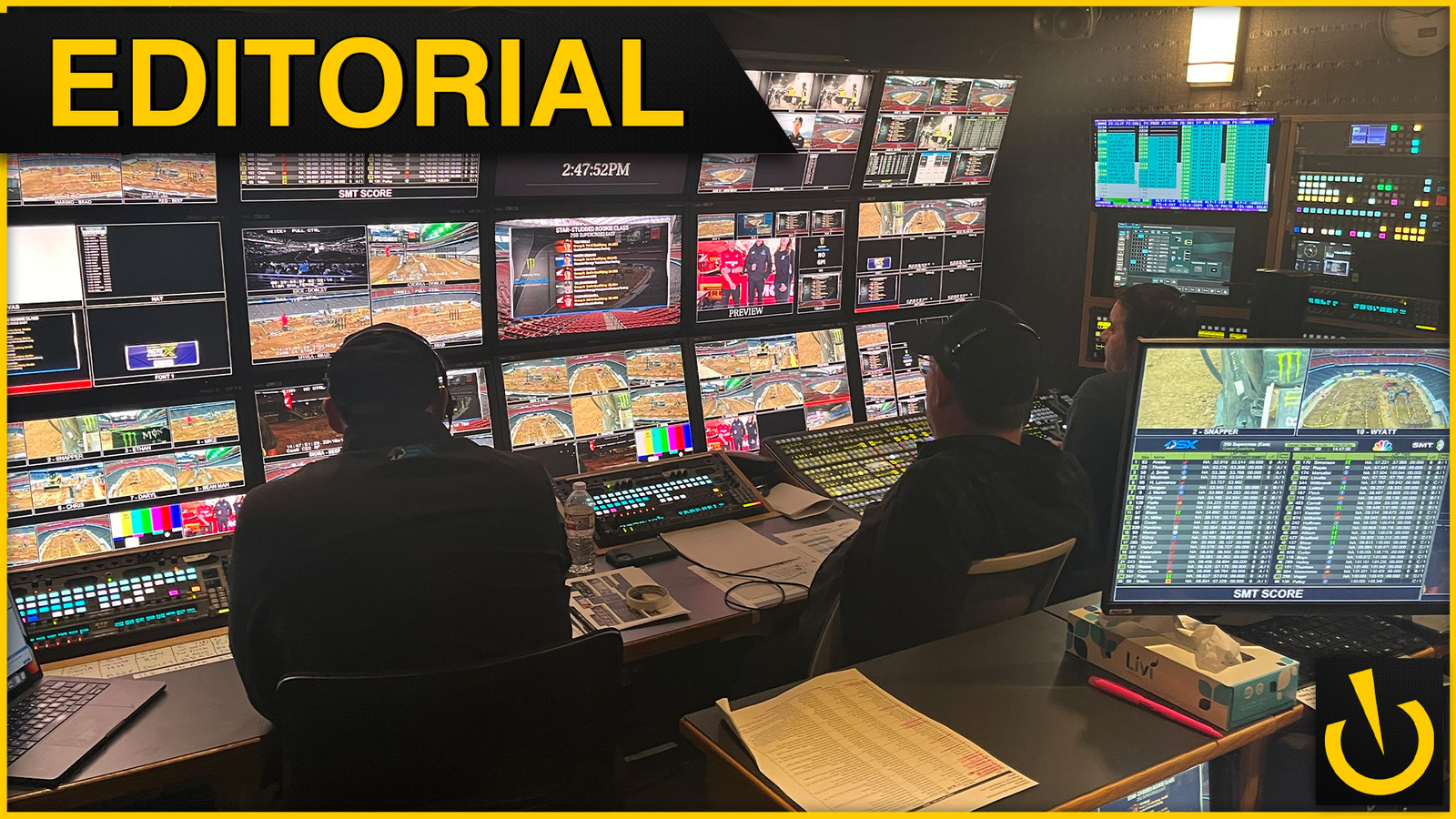
View replies to: The Golden Age of Moto Television | Editorial
Comments